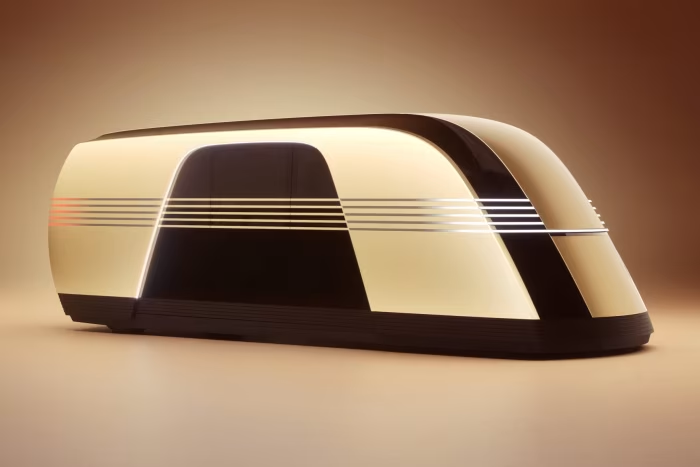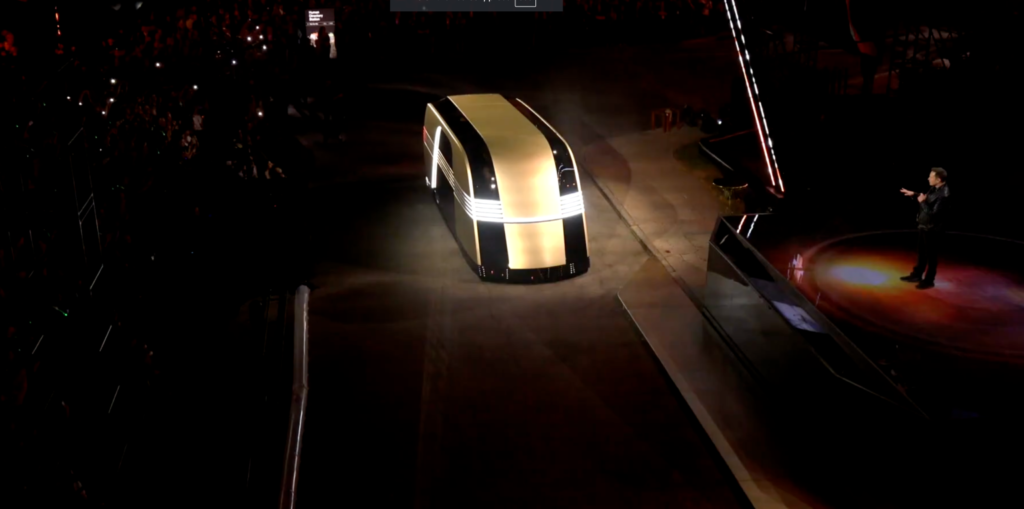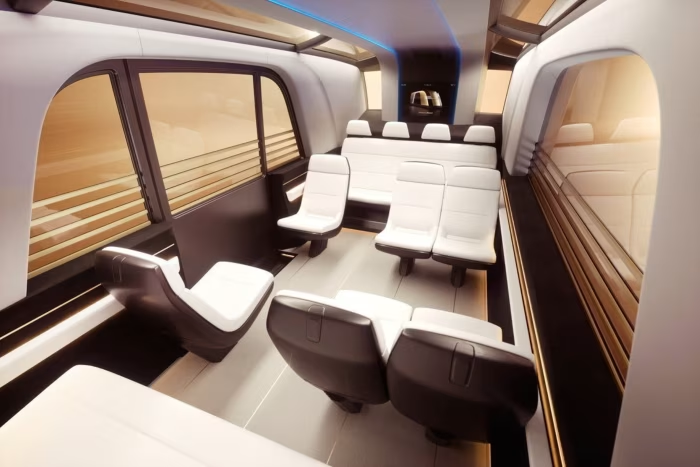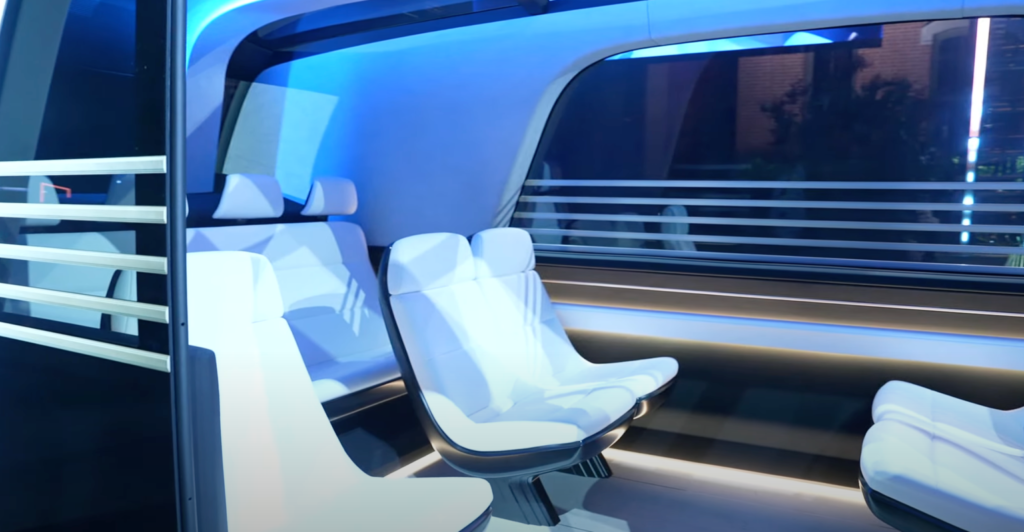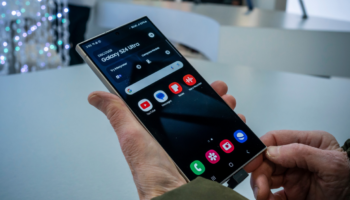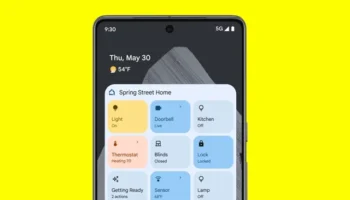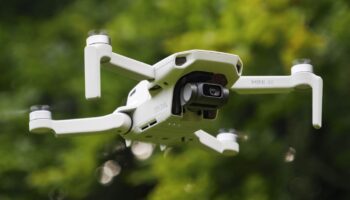Introduction
Elon Musk and Tesla are no strangers to delivering surprises. Whether it’s the futuristic Cybertruck or the sophisticated self-driving technology integrated into Tesla’s cars, the company constantly pushes the boundaries of what we think is possible in the automotive industry. At Tesla’s much-anticipated We, Robot event, the Robovan became the biggest surprise—an autonomous, electric vehicle that could redefine urban transportation.
More than just another electric vehicle, the Robovan is a game-changing innovation designed to solve some of the most pressing challenges cities face today: congestion, pollution, and the growing demand for efficient transportation systems. Unlike traditional vans or buses, the Robovan offers a combination of style, functionality, and groundbreaking technology.
In this article, we’ll delve into why the Robovan is considered Tesla’s biggest surprise yet. You’ll learn about its design, technical specifications, potential impact on urban transport, and how it stacks up against competitors in the autonomous vehicle market.
The Vision Behind the Robovan
The Robovan is not just another vehicle; it represents a vision for the future of transportation. As urban centers grow more congested and densely populated, the demand for efficient transportation solutions has never been greater. Elon Musk, known for his innovative thinking, introduced the Robovan as a solution tailored to address the unique challenges faced by cities around the world.
The Robovan is designed to transport both people and goods in high-density areas, making it an adaptable vehicle that can function as both a passenger van and a cargo transporter. This dual functionality sets it apart from conventional buses, robotaxis, or delivery vehicles, offering a flexible approach to mobility that accommodates the ever-changing needs of urban life. It aims to transform urban environments by creating a seamless transportation experience that prioritizes efficiency, sustainability, and comfort.
The prototype revealed at the We, Robot event showcased Tesla’s continued commitment to pushing the envelope when it comes to autonomous vehicles. While details regarding its production timeline remain elusive, the Robovan’s design and concept promise to have a significant impact on future urban transport systems.
A Design Like No Other
Tesla has always been known for its cutting-edge design, and the Robovan is no exception. Taking inspiration from both retro and futuristic aesthetics, the Robovan looks like something straight out of a science fiction movie. Its smooth, silver metallic finish is accentuated by black details, and strips of light running parallel to the ground give the vehicle a sleek and modern look.
The Robovan’s design features hidden wheels, a nod to its autonomous nature, and sliding doors that open from the middle, optimizing space and accessibility. With its large, tinted windows and absence of a steering wheel, the Robovan reinforces the idea that the future of transportation is hands-free and fully automated.
Tesla’s design choices are not merely aesthetic but functional, aligning with the company’s commitment to reimagining the future of transportation. Musk has long expressed his desire to change the look and feel of roads, and the Robovan embodies that ambition. The vehicle’s sleek, minimalist appearance is designed to integrate smoothly into the urban landscape, while also signaling a bold step forward in vehicle design. It has the potential to influence the way we think about personal and public transport, blending futuristic elements with practical, real-world applications.
Capacity and Comfort: A Close Look Inside the Robovan
One of the most exciting aspects of the Robovan is its capacity. The vehicle is designed to transport up to 20 passengers at a time, making it ideal for high-density urban areas where space is limited. Whether it’s shuttling commuters, tourists, or cargo, the Robovan’s spacious interior is tailored for versatility and efficiency.
Inside, passengers will find seats and standing room, with a layout designed for comfort and ease of movement. The tinted windows offer privacy while allowing natural light to flood the interior, creating a pleasant riding experience. Without a traditional driver’s seat or steering wheel, the Robovan’s interior is optimized for maximum space utilization. It feels more like a futuristic pod than a conventional van, yet remains functional and practical for everyday use.
The Robovan’s ability to handle high passenger volumes is crucial for its role in cities where public transport systems are often overburdened. By offering a comfortable and efficient alternative, Tesla is positioning the Robovan as a key player in the next generation of urban transportation solutions.
Powering the Future: Technical Specifications of the Robovan
Tesla has yet to release the full technical specifications of the Robovan, but industry experts anticipate that the vehicle will be powered by Tesla’s renowned electric drivetrain. With its large size and autonomous capabilities, the Robovan is expected to have an impressive range, likely between 200 to 250 miles on a single charge.
Battery options are expected to include both lithium iron phosphate (LFP) and cobalt-based batteries, giving Tesla the flexibility to offer different models depending on consumer needs and pricing. The LFP battery option could provide a more affordable alternative for cities looking to invest in fleet vehicles, while the cobalt-based batteries would offer higher energy density and longer range for more demanding use cases.
Autonomous driving technology will, of course, be central to the Robovan’s appeal. Like other Tesla vehicles, the Robovan is expected to be equipped with full self-driving (FSD) capabilities, allowing it to navigate busy city streets without the need for human intervention. Tesla’s FSD technology has been the subject of much debate, but its potential to revolutionize transportation is undeniable. The Robovan could become one of the first autonomous public transport vehicles to be widely adopted, marking a significant milestone for Tesla and the electric vehicle industry as a whole.
Production Timeline and Future Prospects for Tesla’s Game-Changer
The Robovan is still in its prototype phase, and Tesla has not provided a concrete timeline for when production will begin. However, based on Elon Musk’s comments during the We, Robot event, it seems likely that the Robovan will enter production after 2026.
This timeline aligns with Tesla’s broader production goals, which aim to scale the company’s manufacturing capabilities to produce 20 million vehicles annually by 2030. While this ambitious target includes all of Tesla’s vehicle models, the Robovan will play a crucial role in helping the company achieve its goal.
To meet these production demands, Tesla may need to build new factories or retool existing facilities to accommodate the Robovan’s unique design and manufacturing requirements. Musk has not yet outlined specific plans for these expansions, but the Robovan’s eventual production will likely coincide with the rollout of Tesla’s other upcoming vehicles, such as the Cybercab.
The Broader Impact of Tesla’s Vision on Urban Transport Systems
The introduction of the Robovan is part of Tesla’s larger strategy to revolutionize urban transportation. By creating autonomous, electric vehicles that can transport both people and goods, Tesla is positioning itself as a leader in the future of mobility.
The Robovan fits into a broader ecosystem of Tesla vehicles, which includes the Cybertruck and the Cybercab. Together, these vehicles could form the backbone of a new kind of transportation network—one that is efficient, sustainable, and capable of meeting the needs of cities in the 21st century.
Tesla’s vision for the future of transportation is centered on reducing congestion, lowering emissions, and improving the overall quality of life in urban environments. The Robovan is a key part of this vision, offering a solution that is not only practical but also aligned with the company’s commitment to sustainability and innovation.
Navigating Competition in the Autonomous Vehicle Market with Zoox, Cruise, WeRide, and More
Tesla is not the only company developing autonomous vehicles designed for urban transport. Competitors like Zoox, Cruise, and WeRide are also working on similar projects, each with its own approach to solving the challenges of urban mobility.
Zoox, for example, has developed a compact, autonomous vehicle designed for dense urban environments. Similarly, Cruise, backed by General Motors, is focused on building autonomous ride-hailing services. In China, WeRide has developed the Robobus, a vehicle similar in size and functionality to the Robovan.
Despite the competition, Tesla’s Robovan has a significant advantage thanks to the company’s expertise in electric vehicle technology and autonomous driving. Tesla’s vehicles are already known for their long range, reliability, and innovative features, and the Robovan is likely to build on this reputation.
Insights from Elon Musk on Investor Day 2023: The Road Ahead for Autonomous Vehicles
During Tesla’s Investor Day in 2023, Elon Musk provided valuable insights into the company’s plans for autonomous vehicles. Musk hinted at the development of a larger, van-like vehicle designed for mass production—a project that has since materialized as the Robovan.
At Investor Day, Musk emphasized Tesla’s goal of producing 20 million vehicles annually by 2030, a target that will require the company to significantly expand its production capabilities. The Robovan is expected to play a key role in achieving this goal, particularly in urban areas where demand for efficient, autonomous transportation solutions is growing.
Musk also highlighted the importance of scaling Tesla’s autonomous driving technology, which will be a crucial factor in the success of the Robovan and other future Tesla vehicles.
Conclusion: Embracing Innovation with Open Arms – The Future Awaits Us All!
Tesla’s Robovan represents a bold step forward in the evolution of urban transportation. With its autonomous capabilities, innovative design, and dual functionality, the Robovan is poised to become a game-changer in cities around the world.
As Tesla continues to push the boundaries of what’s possible, the Robovan serves as a reminder that the future of transportation is closer than we think. Whether it’s transforming public transport, reducing congestion, or creating more sustainable cities, the Robovan is a glimpse into the exciting innovations that lie ahead. Embracing these technologies will not only improve our daily lives but also pave the way for a cleaner, more efficient, and more connected world.

